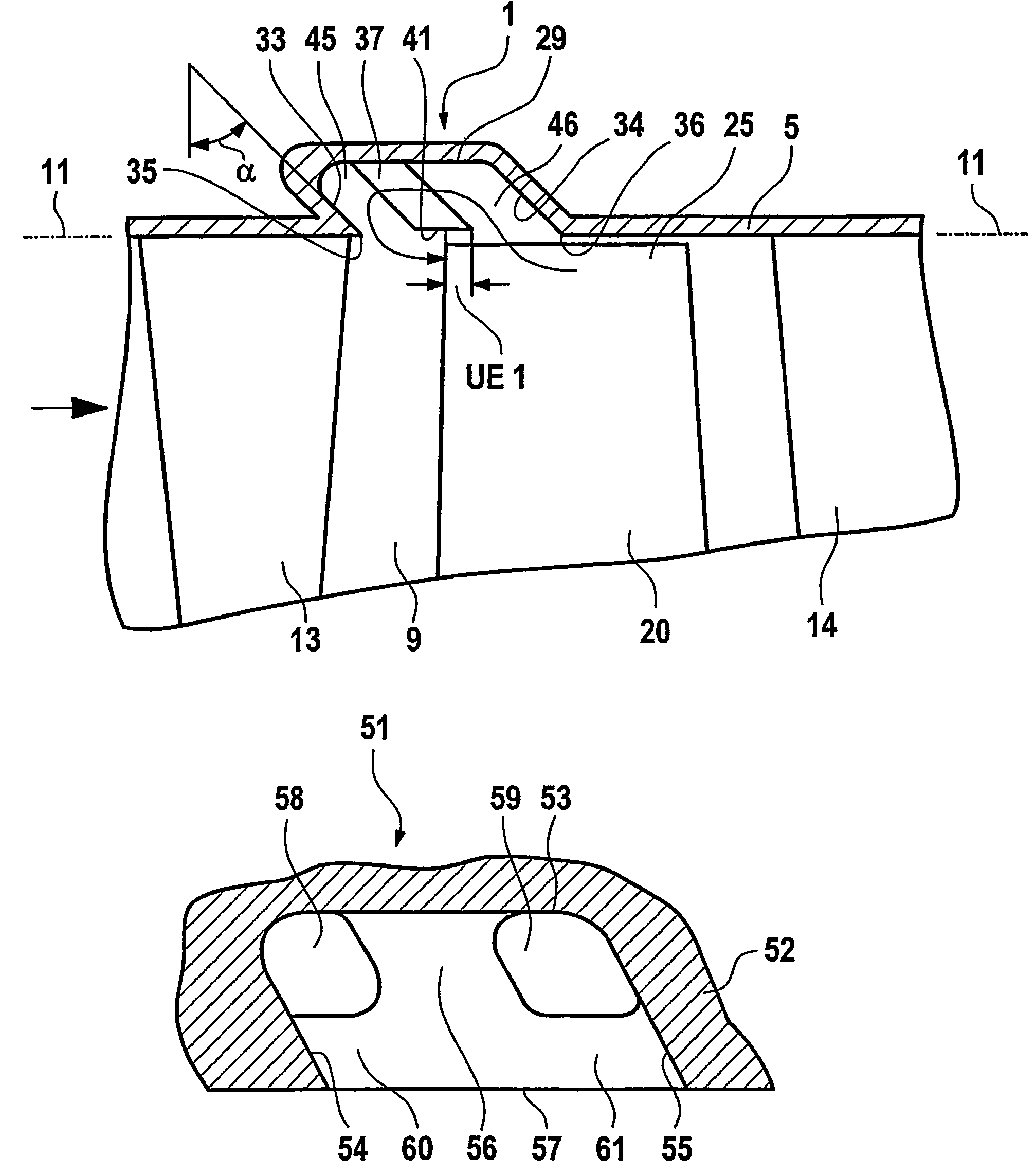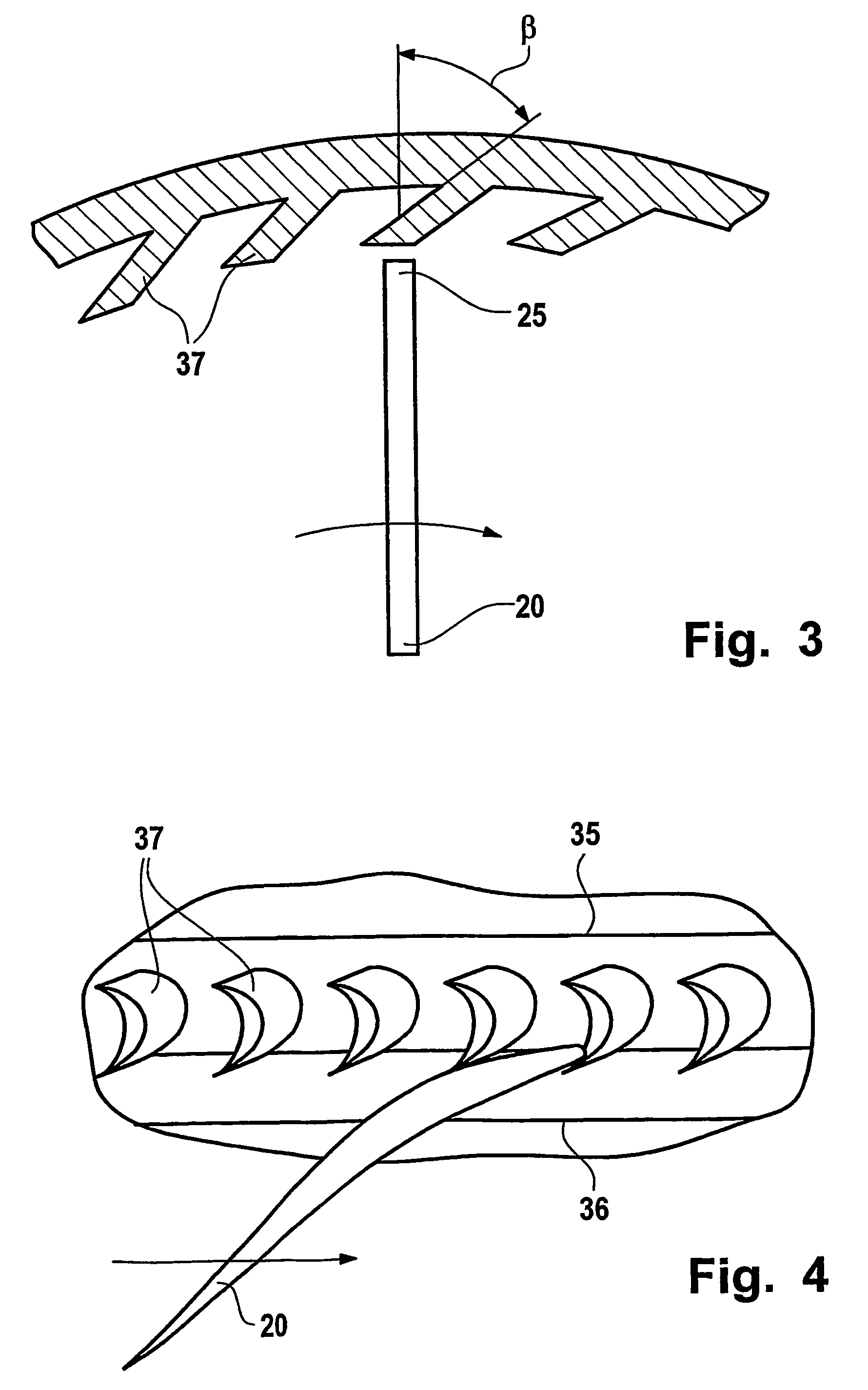Recirculation structure for a turbocompressor
a turbocompressor and recirculation structure technology, which is applied in the direction of turbine/propulsion air intake, motors, air transportation, etc., can solve the problems of reducing the efficiency level of the compressor, affecting so as to improve the surge margin, reduce and improve the efficiency of the compressor.
- Summary
- Abstract
- Description
- Claims
- Application Information
AI Technical Summary
Benefits of technology
Problems solved by technology
Method used
Image
Examples
Embodiment Construction
[0022]The recirculation structure 1 according to FIG. 1 is integrated into the casing 5 of a turbo-compressor, and thus is to be referred to as a “casing treatment”. The direction of flow in the bladed main flow channel 9 is indicated on the left by an arrow, thus it flows from left to right. In the area shown here, the flow first strikes a vane ring 13, then a rotating blade ring 20, and finally another vane ring 14. The radial outer contour 11 of the main flow channel 9 corresponds to the inner contour of the casing 5, and for purposes of clarification is continued here by dotted / dashed lines to the left and right of the actual illustration. The static recirculation structure 1 operates in conjunction with the rotating blade ring 20, and lies for the most part axially in front of said blade ring, i.e. upstream. The annular chamber 29, which together with the guide vanes 37 forms the recirculation structure 1, borders the main flow channel 9 radially from the outside, and is open t...
PUM
 Login to View More
Login to View More Abstract
Description
Claims
Application Information
 Login to View More
Login to View More - R&D
- Intellectual Property
- Life Sciences
- Materials
- Tech Scout
- Unparalleled Data Quality
- Higher Quality Content
- 60% Fewer Hallucinations
Browse by: Latest US Patents, China's latest patents, Technical Efficacy Thesaurus, Application Domain, Technology Topic, Popular Technical Reports.
© 2025 PatSnap. All rights reserved.Legal|Privacy policy|Modern Slavery Act Transparency Statement|Sitemap|About US| Contact US: help@patsnap.com



